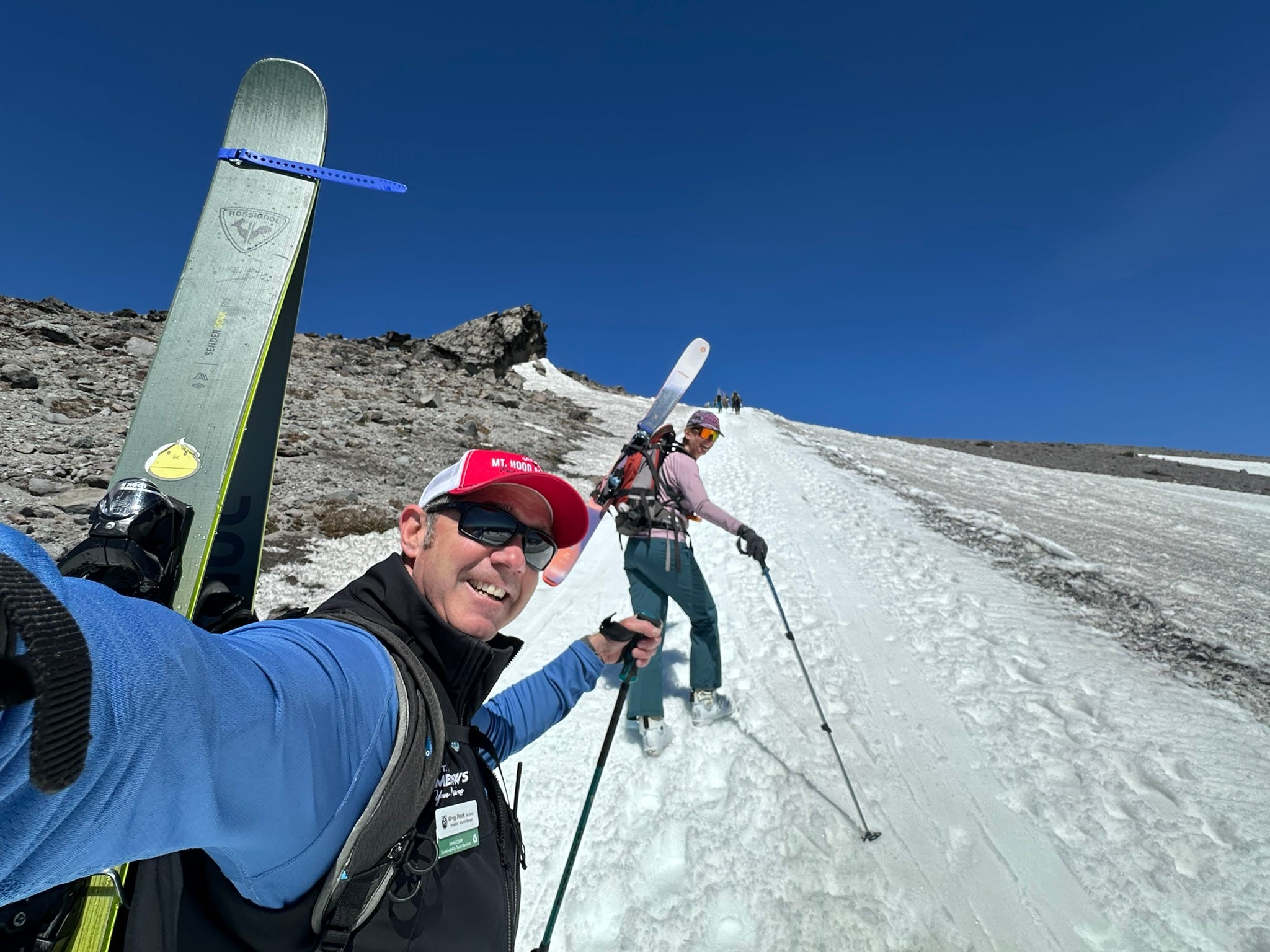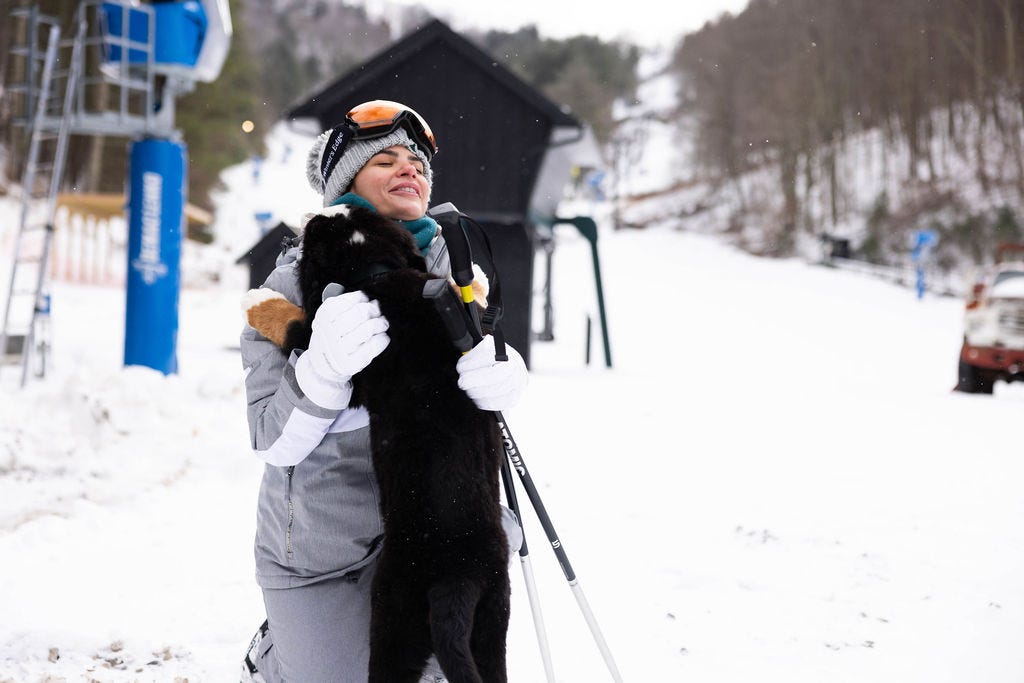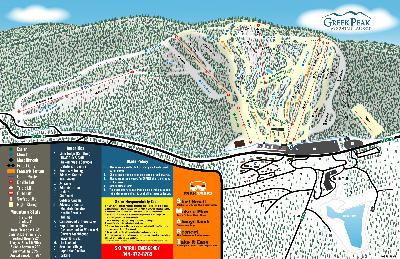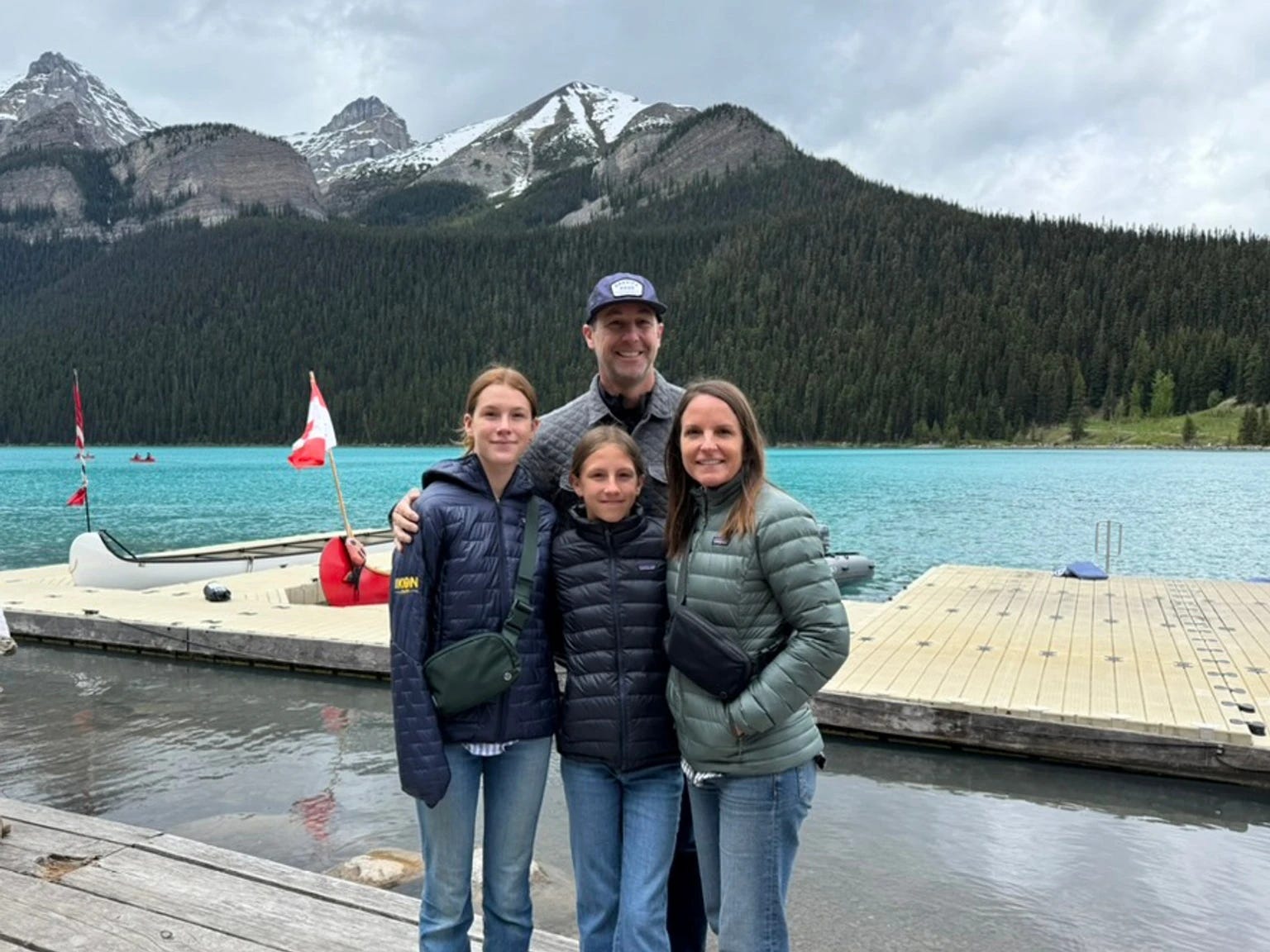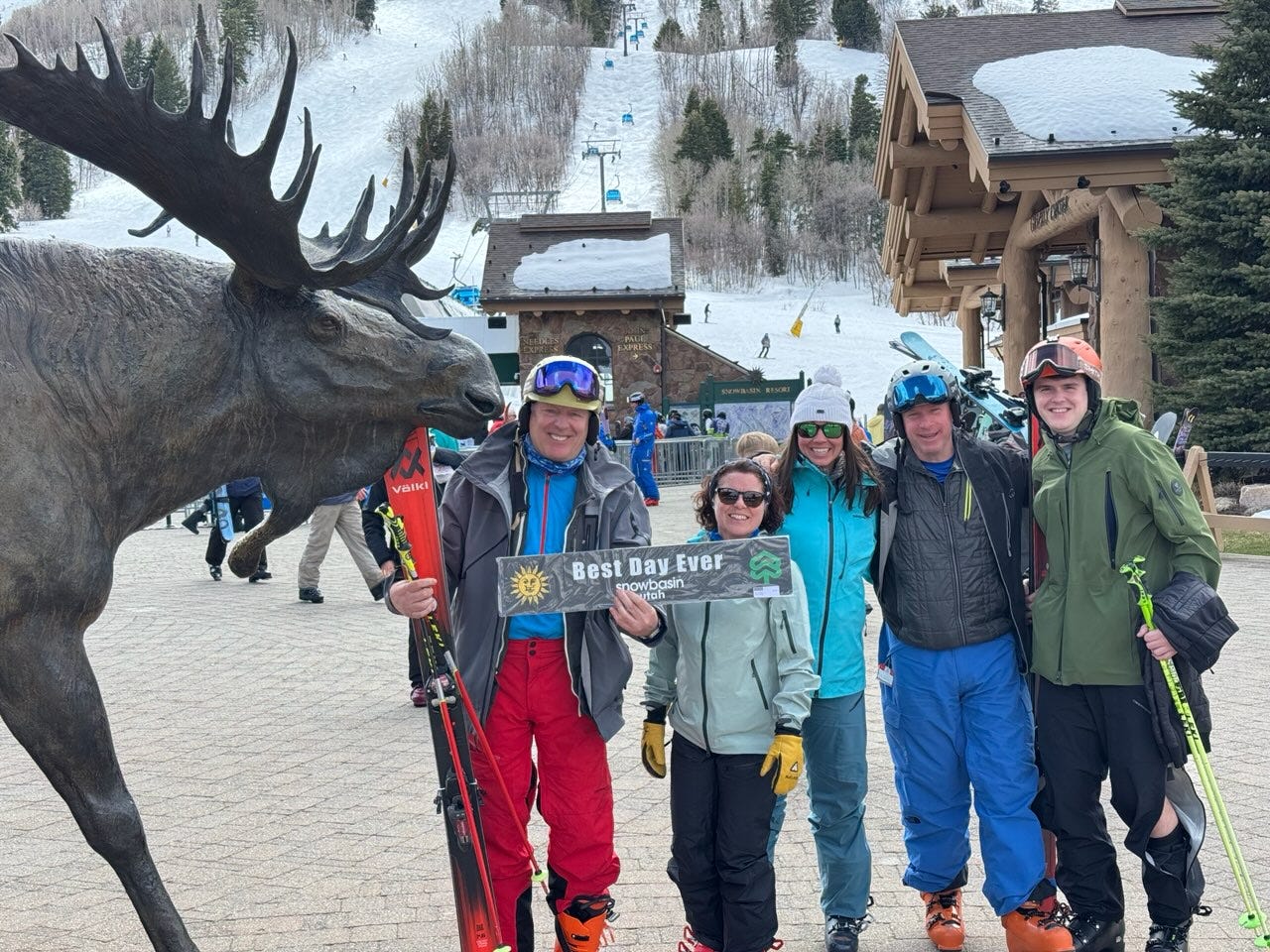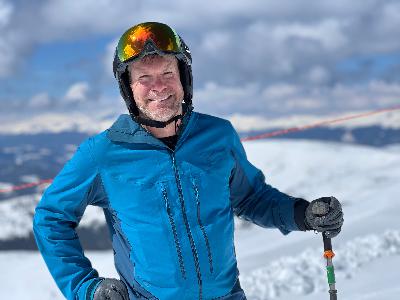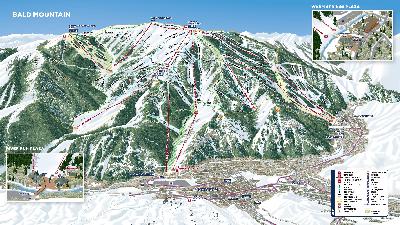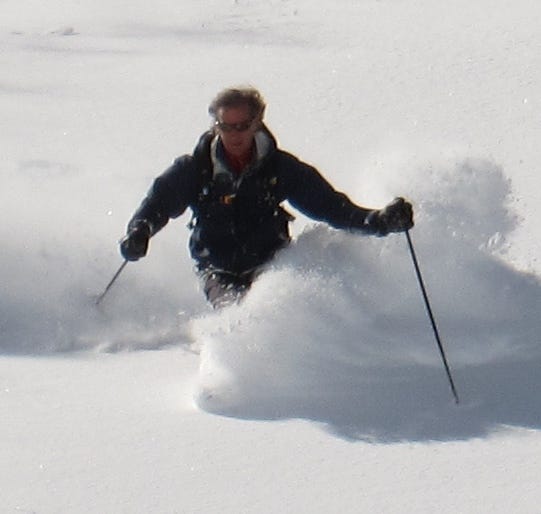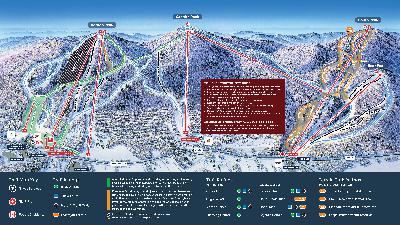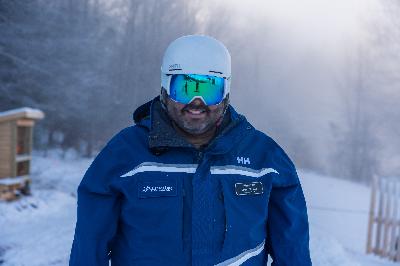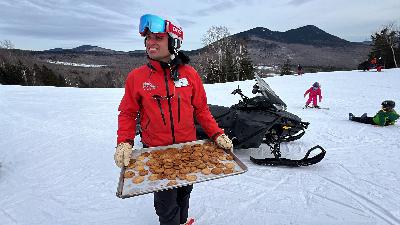Podcast #210: Mt. Hood Meadows President and General Manager Greg Pack
Description
The Storm does not cover athletes or gear or hot tubs or whisky bars or helicopters or bros jumping off things. I’m focused on the lift-served skiing world that 99 percent of skiers actually inhabit, and I’m covering it year-round. To support this mission of independent ski journalism, please subscribe to the free or paid versions of the email newsletter.
Who
Greg Pack, President and General Manager of Mt. Hood Meadows, Oregon
Recorded on
April 28, 2025
About Mt. Hood Meadows
Click here for a mountain stats overview
Owned by: The Drake Family (and other minority shareholders)
Located in: Mt. Hood, Oregon
Year founded: 1968
Pass affiliations:
* Indy Pass – 2 days, select blackouts
* Indy+ Pass – 2 days, no blackouts
Closest neighboring U.S. ski areas: Summit (:17), Mt. Hood Skibowl (:19), Cooper Spur (:23), Timberline (:26)
Base elevation: 4,528 feet
Summit elevation: 7,305 feet at top of Cascade Express; 9,000 feet at top of hike-to permit area; 11,249 feet at summit of Mount Hood
Vertical drop: 2,777 feet lift-served; 4,472 hike-to inbounds; 6,721 feet from Mount Hood summit
Skiable acres: 2,150
Average annual snowfall: 430 inches
Trail count: 87 (15% beginner, 40% intermediate, 15% advanced, 30% expert)
Lift count: 11 (1 six-pack, 5 high-speed quads, 1 fixed-grip quad, 3 doubles, 1 carpet – view Lift Blog’s inventory of Mount Hood Meadows’ lift fleet)
About Cooper Spur
Click here for a mountain stats overview
Owned by: The Drake Family
Located in: Mt. Hood, Oregon
Year founded: 1927
Pass affiliations: Indy Pass, Indy+ Pass – 2 days, no blackouts
Closest neighboring U.S. ski areas: Mt. Hood Meadows (:22), Summit (:29), Mt. Hood Skibowl (:30), Timberline (:37)
Base elevation: 3,969 feet
Summit elevation: 4,400 feet
Vertical drop: 431 feet
Skiable acres: 50
Average annual snowfall: 250 inches
Trail count: 9 (1 most difficult, 7 more difficult, 1 easier)
Lift count: 2 (1 double, 1 ropetow – view Lift Blog’s inventory of Cooper Spur’s lift fleet)
Why I interviewed him
Volcanoes are weird. Oh look, an exploding mountain. Because that seems reasonable. Volcanoes sound like something imagined, like dragons or teleportation or dinosaurs*. “So let me get this straight,” I imagine some puzzled Appalachian miner, circa 1852, responding to the fellow across the fire as he tells of his adventures in the Oregon Territory, “you expect me to believe that out thataways they got themselves mountains that just blow their roofs off whenever they feel like it, and shoot off fire and rocks and gas for 50 mile or more, and no one never knows when it’s a’comin’? You must think I’m dumber’n that there tree stump.”
Turns out volcanoes are real. How humanity survived past day one I have no idea. But here we are, skiing on volcanoes instead of tossing our virgins from the rim as a way of asking the nice mountain to please not explode (seriously how did anyone make it out of the past alive?).
And one of the volcanoes we can ski on is Mount Hood. This actually seems more unbelievable to me than the concept of a vengeful nuclear mountain. PNW Nature Bros shield every blade of grass like they’re guarding Fort Knox. When, in 2014, federal scientists proposed installing four monitoring stations on Hood, which the U.S. Geological Survey ranks as the sixth-highest threat to erupt out of America’s 161 active volcanoes, these morons stalled the process for six years. “I think it is so important to have places like that where we can just step back, out of respect and humility, and appreciate nature for what it is,” a Wilderness Watch official told The New York Times. Personally I think it’s so important to install basic monitoring infrastructure so that thousands of people are not incinerated in a predictable volcanic eruption. While “Japan, Iceland and Chile smother their high-threat volcanoes in scientific instruments,” The Times wrote, American Granola Bros say things like, “This is more proof that the Forest Service has abandoned any pretense of administering wilderness as per the letter or spirit of the Wilderness Act.” And Hood and the nation’s other volcanoes cackle madly. “These idiots are dumber than the human-sacrifice people,” they say just before belching up an ash cloud that could take down a 747. When officials finally installed these instrument clusters on Hood in 2020, they occupied three boxes that look to be approximately the size of a convenience-store ice freezer, which feels like an acceptable trade-off to mass death and airplanes falling out of the sky.
I know that as an outdoor writer I’m supposed to be all pissed off if anyone anywhere suggests any use of even a centimeter of undeveloped land other than giving it back to the deer in a treaty printed on recycled Styrofoam and signed with human blood to symbolize the life we’ve looted from nature by commandeering 108 square feet to potentially protect millions of lives from volcanic eruption, but this sort of trivial protectionism and willful denial that humans ought to have rights too is the kind of brainless uncompromising overreach that I fear will one day lead to a massive over-correction at the other extreme, in which a federal government exhausted with never being able to do anything strips away or massively dilutes land protections that allow anyone to do anything they can afford. And that’s when we get Monster Pete’s Arctic Dune Buggies setting up a casino/coal mine/rhinoceros-hunting ranch on the Eliot Glacier and it’s like thanks Bros I hope that was worth it to stall the placement of gardenshed-sized public safety infrastructure for six years.
Anyway, given the trouble U.S. officials have with installing necessary things on Mount Hood, it’s incredible how many unnecessary ones our ancestors were able to build. But in 1927 the good old boys hacked their way into the wilderness and said, “by gum what a spot for snoskiing” and built a bunch of ski areas. And today 31 lifts serve four Mt. Hood ski areas covering a combined 4,845 acres:
Which I’m just like, do these Wilderness Watch people not know about this? Perhaps if this and similar groups truly cared about the environmental integrity of Mount Hood they would invest their time, energy, and attention into a long-term regional infrastructure plan that identified parcels for concentrated mixed-use development and non-personal-car-based transit options to mitigate the impact of thousands of skiers traveling up the mountain daily from Portland, rather than in delaying the installation of basic monitoring equipment that notifies humanity of a civilization-shattering volcanic eruption before it happens. But then again I am probably not considering how this would impact the integrity of squirrel poop decomposition below 6,000 feet and the concomitant impacts on pinestand soil erosion which of course would basically end life as we know it on planet Earth.
OK this went sideways let me try to salvage it.
*Whoops I know dinosaurs were real; I meant to write “the moon landing.” How embarrassing.
What we talked about
A strong 2024-25; recruiting employees in mountains with little nearby housing; why Meadows doesn’t compete with Timberline for summer skiing; bye-bye Blue double, Meadows’ last standing opening-year chairlift; what it takes to keep an old Riblet operating; the reliability of old versus new chairlifts; Blue’s slow-motion demolition and which relics might remain long term; the logic of getting a free anytime buddy lift ticket with your season pass; thoughts on ski area software providers that take a percentage of all sales; why Meadows and Cooper Spur have no pass reciprocity; the ongoing Cooper Spur land exchange; the value of Cooper Spur and Summit on a volcano with three large ski areas; why Meadows hasn’t backed away from reciprocal agreements; why Meadows chose Indy over Epic, Ikon, or Mountain Collective; becoming a ski kid when you’re not from a ski family; landing at Mountain Creek, New Jersey after a Colorado ski career; how Moonlight Basin started as an independent ski area and eventually became part of Big Sky; the tension underlying Telluride; how the Drake Family, who has managed the ski area since inception, makes decisions; a board that reinvests 100 percent of earnings back into the mountain; why we need large independents in a consolidating world; being independent is “our badge of honor”; whether ownership wants to remain independent long term; potential next lift upgrades; a potential all-new lift line and small expansion; thoughts on a bett

